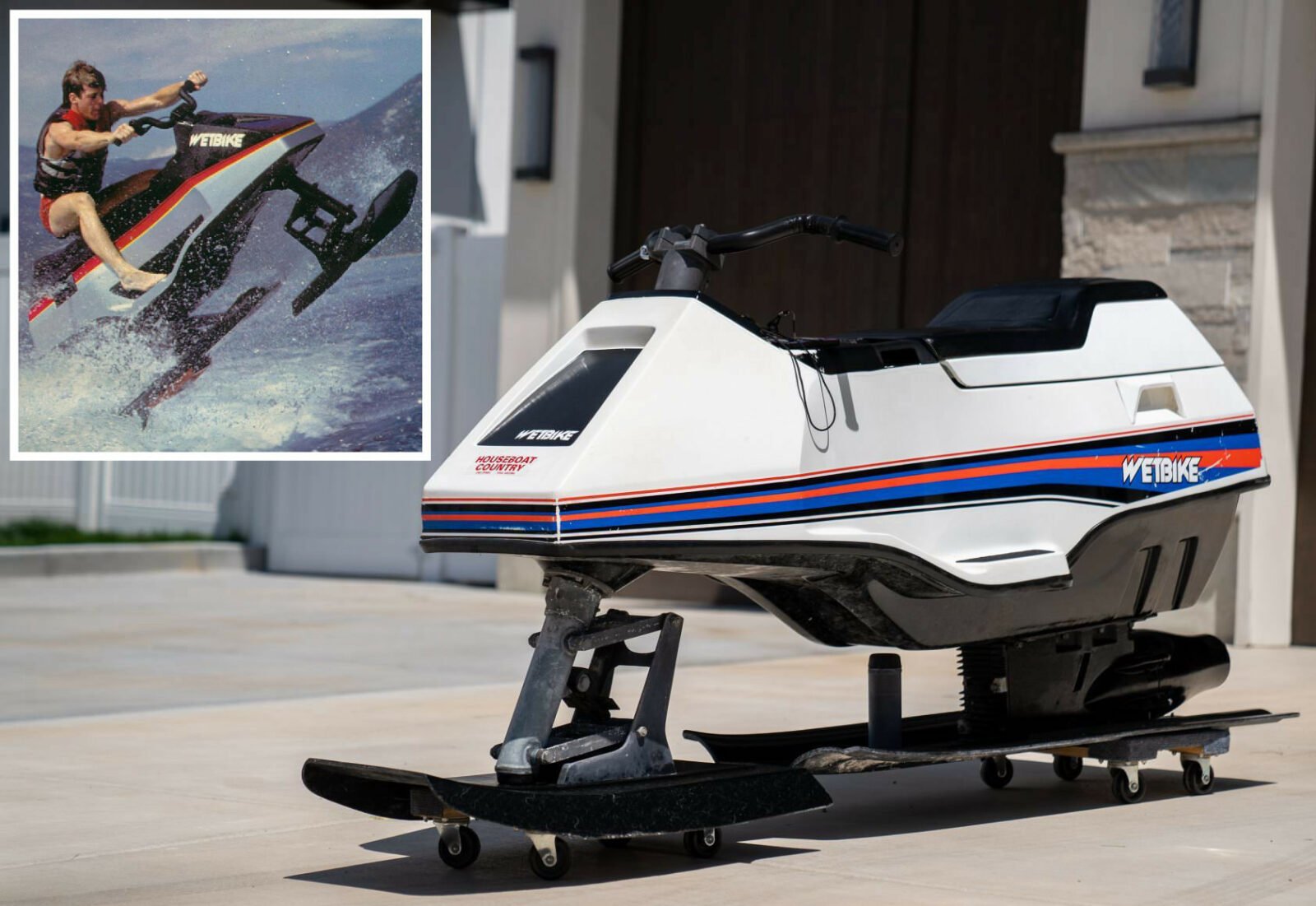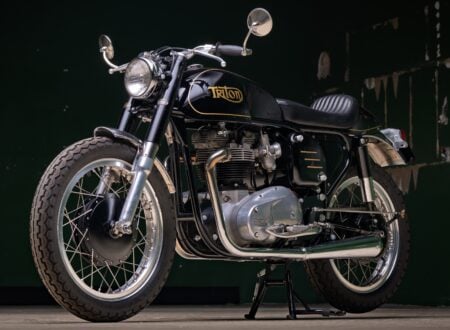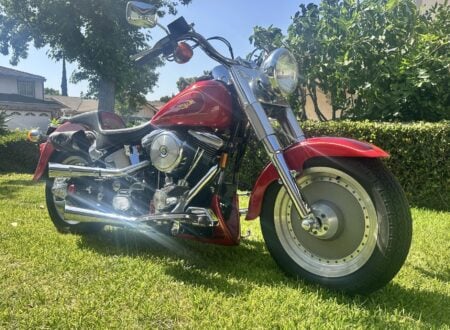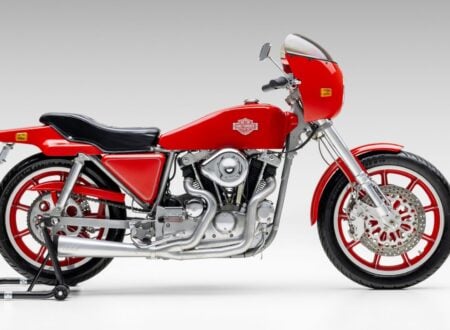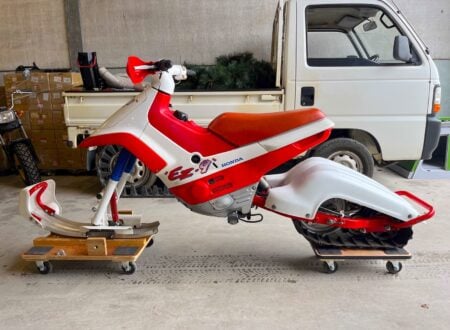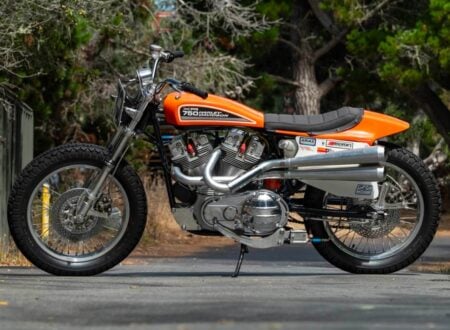This is a Spirit Marine Wetbike from 1978, it was originally marketed as the “Wetbike Watercycle,” essentially a motorcycle designed for use on the water that has planing skis front and back rather than wheels.
Wetbike production ran from 1978 until 1992, they were among the fastest personal watercraft available anywhere in the world during their time. This speed was thanks to the 723cc two-stroke twin-cylinder engine that produced 50 bhp, driving an axial-flow waterjet drive.
Fast Facts – The Wetbike
- The Wetbike was invented by engineering genius Nelson Tyler in the late 1970s and released as a commercial personal watercraft by Spirit Marine in 1978. Spirit Marine was a subsidiary of Arctic Enterprises, which is now better known as Arctic Cat.
- The design of the Wetbike has been compared to a motorcycle for the water, it rides on two planing skis with the front ski offering directional control. Riders lean into corners as on a motorcycle, and the front skis suspension helps to soak up bumps and shocks.
- Power is provided by a 723cc Spirit reed-valve two-stroke engine producing 50 hp, with later examples receiving a 60 hp 800cc Suzuki engine. The top speed is listed as between 33 and 36 mph.
- The Wetbike remained in production from 1978 to 1992 with a series of design upgrades over that time. Its inventor Nelson Tyler would go onto design the cinema camera “Tyler Mount” system, the rocket pack used in the opening ceremony of the 1984 Olympics in LA, and a gyro-stabilized camera system that won him an Academy Award in 2005.
The Wetbike: A Motorcycle For The Water
The Wetbike debuted in 1978, it was designed by Nelson Tyler who is perhaps better remembered for his revolutionary “Tyler Mount” used in the cinema industry. He’s also the man who developed the rocket pack that was used during the opening ceremony of the 1984 Olympics in LA. Her then later won an Academy Award in 2005 for his gyro-stabilized camera systems.
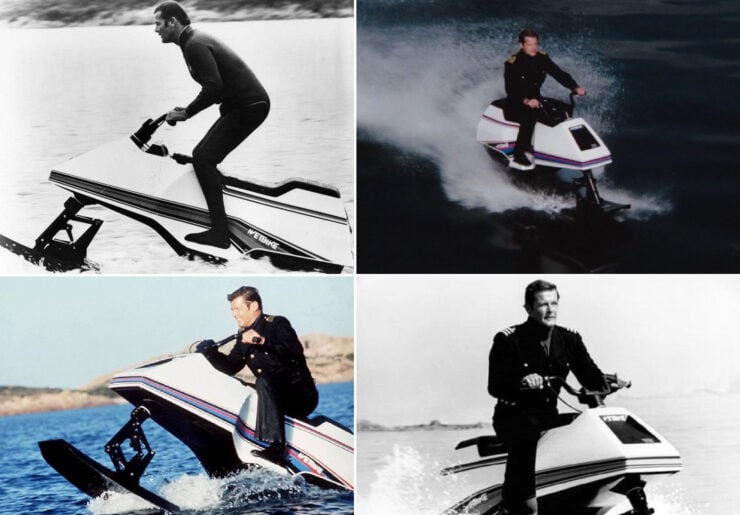

Many believe that the first jet ski had been introduced in 1973 by Kawasaki as the Kawasaki JS400 Jet Ski. However the concept had actually been pioneered by Clayton Jacobson II in Europe in the 1950s with his “Water Scooter.” This design was evolved into the Bombardier Sea-Doo which was produced in limited numbers.
Kawasaki later reached a licensing agreement with Bombardier to use Jacobson’s invention and they released the first commercially successful model in 1973 – the Kawasaki JS400 Jet Ski. The entire jet ski industry was very much still in its infancy in the late 1970s when the Wetbike was introduced, and the Wetbike offered a number of advantages over its jet ski rivals.
Perhaps the most significant of those advantages was the use of front steering by way of a planing ski on its own shock absorbers. This allowed motorcycle-like steering, it also meant people could lean into turns, and the shock absorber front end soaked up buffeting.
The most significant downside to the Wetbike was its learning curve, riders had to learn to get the craft up to its planing speed of 11-15 mph at which point it would rise up onto its front and rear skis and a top speed of up to 36 mph could be achieved, depending on water conditions of course.
Above Video: This is an official Wetbike promotional video from the 1980s, likely from 1986 onwards as it shows the later Suzuki-powered version.
Once the rider was up on the skis it was actually not particularly challenging to ride, just as soon as they adapted to the sensation of piloting a motorcycle across the water. Some said that it was actually easier to ride with a passenger on the back as it gave more rear-weight bias, and some experienced riders were able to pull a skier behind them.
The Wetbike had a number of brushes with fame starting with a memorable appearance in the 1977 James Bond film The Spy Who Loved Me in which Roger Moore, as 007, could be seen riding one to the villain’s lair. Interestingly the Wetbike used in the film was a prototype as the commercial version wasn’t yet in production.
Another Wetbike would appear in the CHiPs episode “Overload” in 1982 in which Ponch and Jon use rented Wetbikes to chase microchip thieves trying to escape in a speedboat.
In the 1986 film Police Academy 3: Back in Training a group of police recruits use Wetbikes to chase down thieves in speedboats during the film’s ending scene. Later in 1990 the George Clooney film Red Surf would feature surfers using Wetbikes to transport cocaine across the water at high speeds.
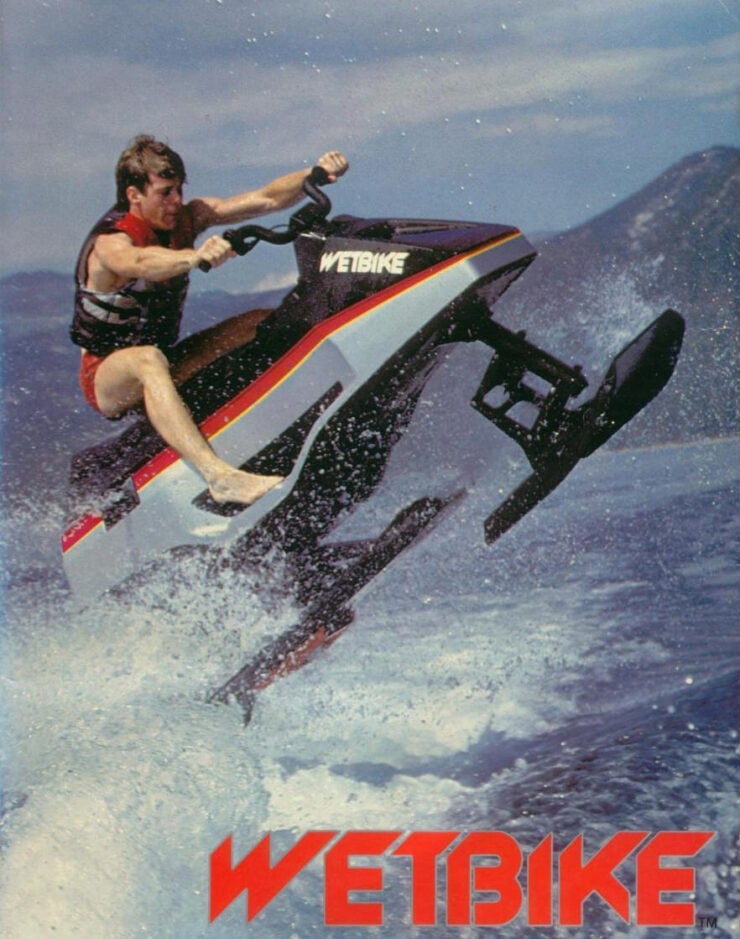

Wetbike: Specifications
- The Wetbike has a hull that contains the engine, fuel, and electrical systems. Onto this Hull the front and rear skis are mounted, as is the axial-flow waterjet drive.
- Power is provided by one of two engines depending on the year of manufacture. Earlier Wetbikes from 1978 to 1985 received the 723cc 50 hp Spirit reed-valve two-stroke engine, and later examples from 1986 to 1992 were powered by a more powerful 800cc Suzuki engine producing 60 hp.
- The final drive was by way of the aforementioned axial-flow waterjet drive which is said to have produced over 500 lbs of thrust, the lack of an external propeller was critical for safety, and some claimed the Wetbike actually handled better with a passenger on the back to the weight shifting rearward.
- At speed of between 11-15 mph the Wetbike would rise up onto its planing front and rear skis, providing motorcycle-like handling. The front ski controlled direction via the handlebars and it was mounted by way of a suspension system that soaked up buffeting.
- The top speed was between 33 and 36 mph, with that higher speed being thanks to the later Suzuki power unit. At the time it was the fastest personal watercraft available to buy.
- Production ran from 1978 to 1992 at which point it could no longer compete with the newer generations of jet skis. The Wetbike has remained a bit of a cult classic however and many are still in use, there’s also a vibrant owner’s community in the USA.
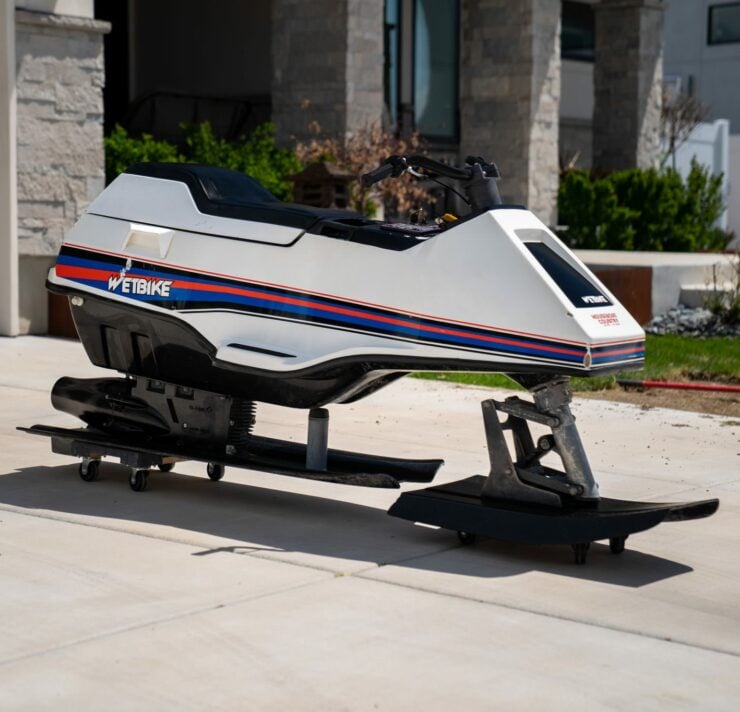

The 1978 Wetbike Shown Here
The vehicle you see here is a Wetbike from the first year of manufacture – 1978. It benefits from a recently fitted new battery for the electric start and a cleaned fuel system.
It’s being offered for sale out of White City, Utah and it comes with a Utah registration in the seller’s name and a bill of sale.
If you’d like to read more about it or register to bid you can visit the listing here on Bring a Trailer.
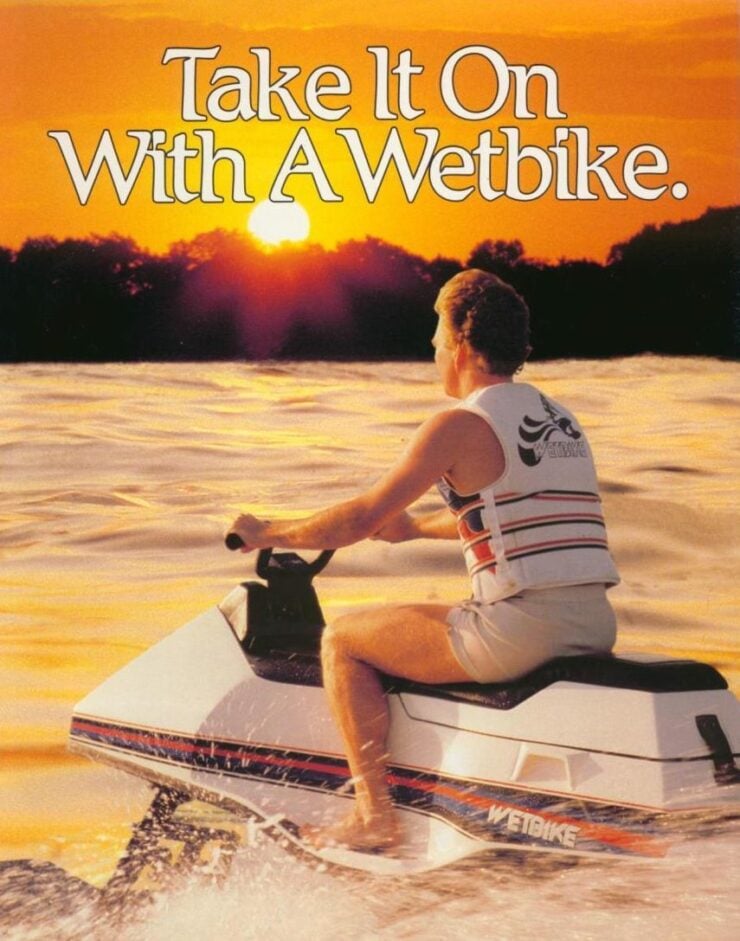
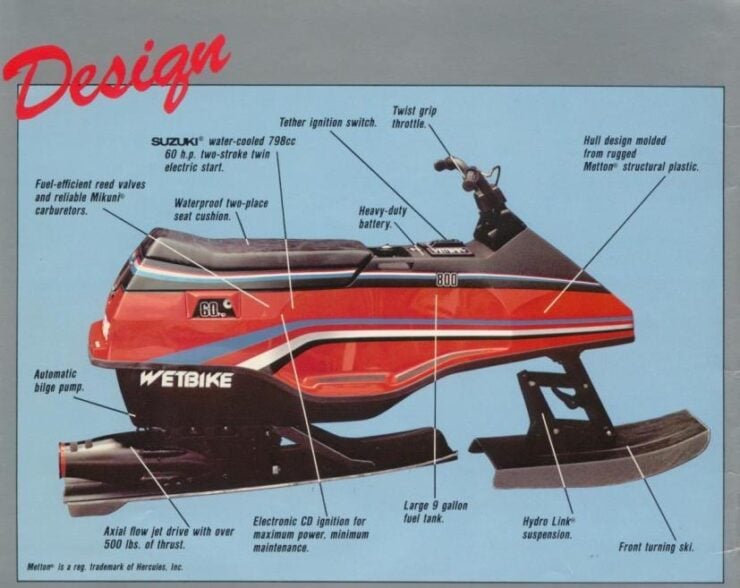
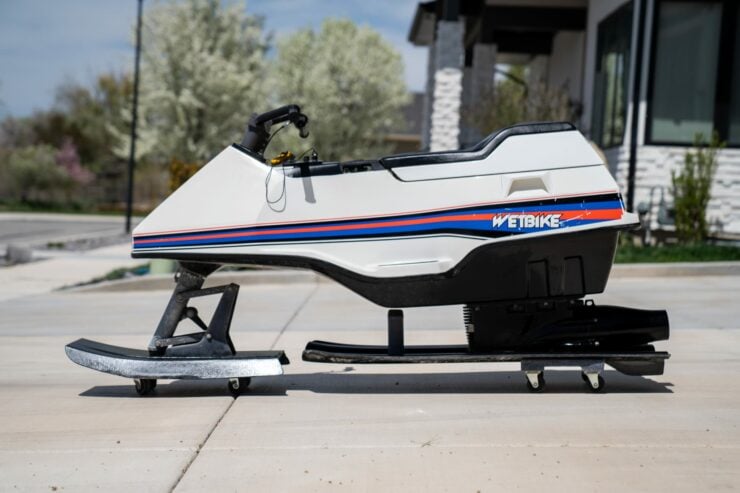
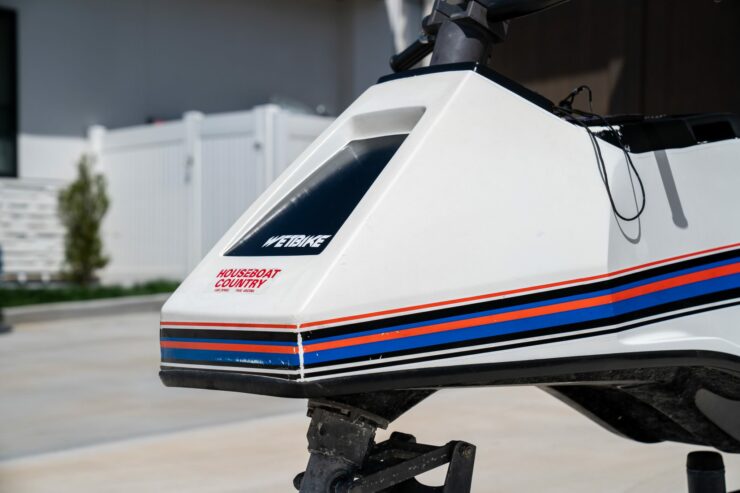
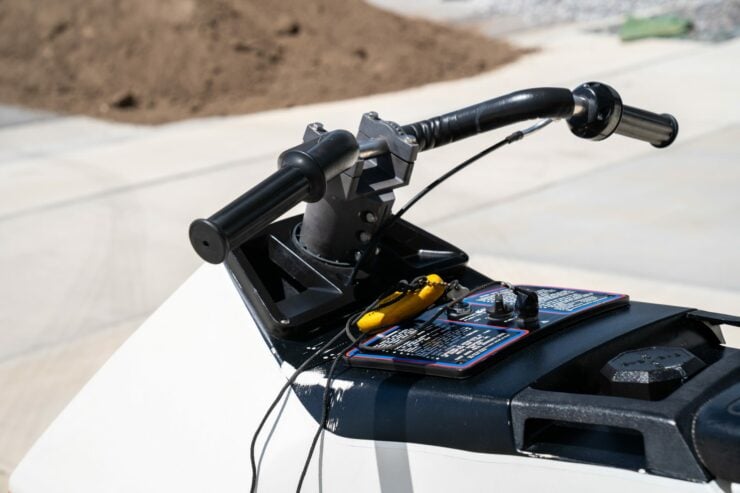
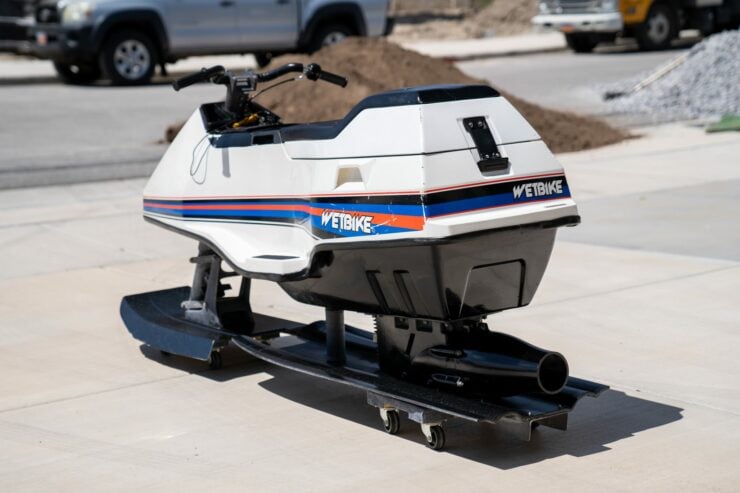
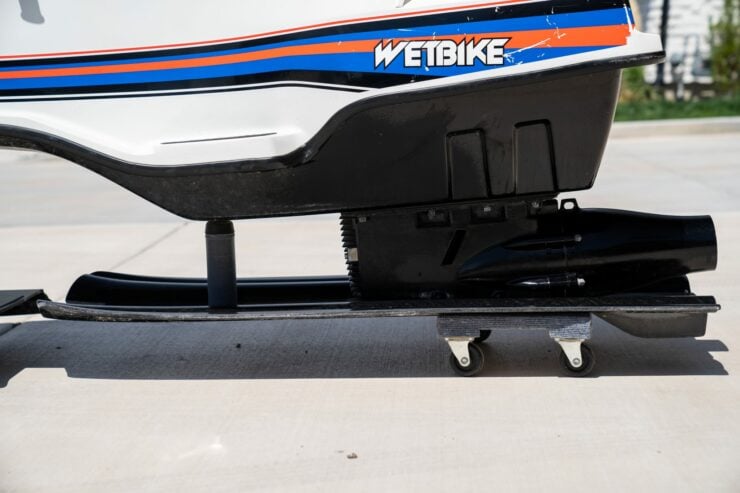
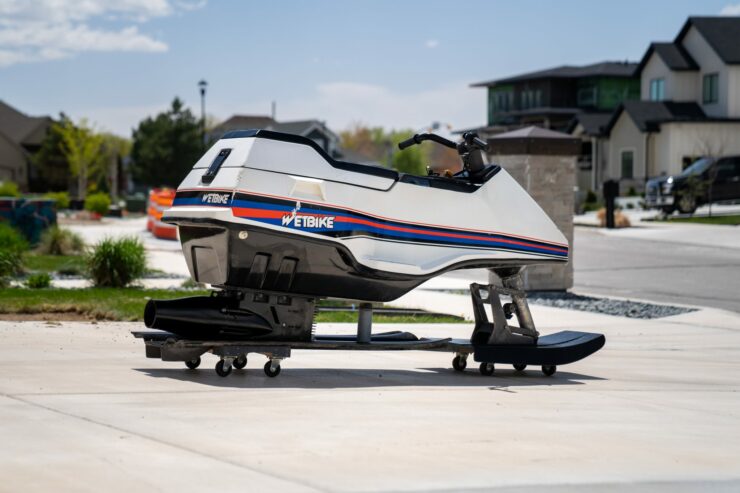
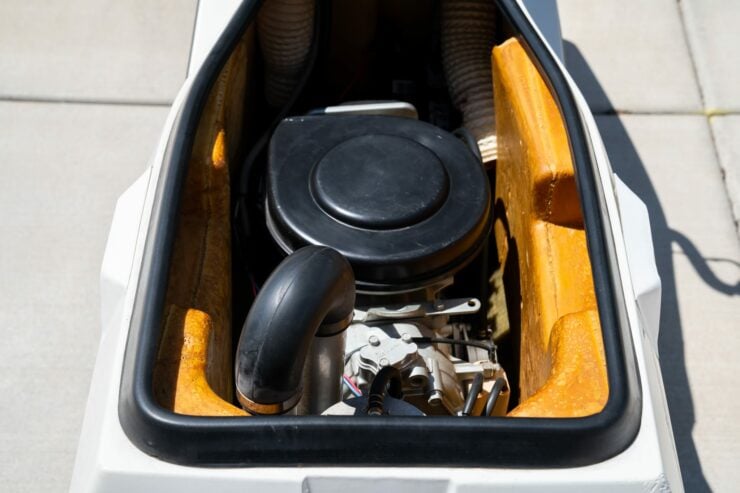
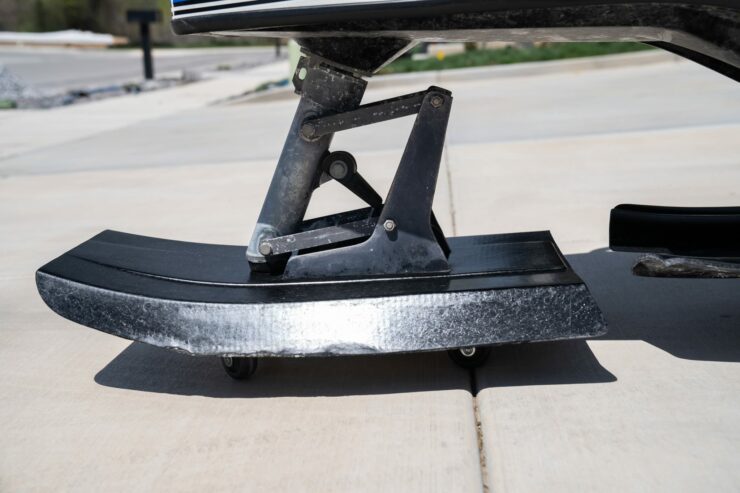
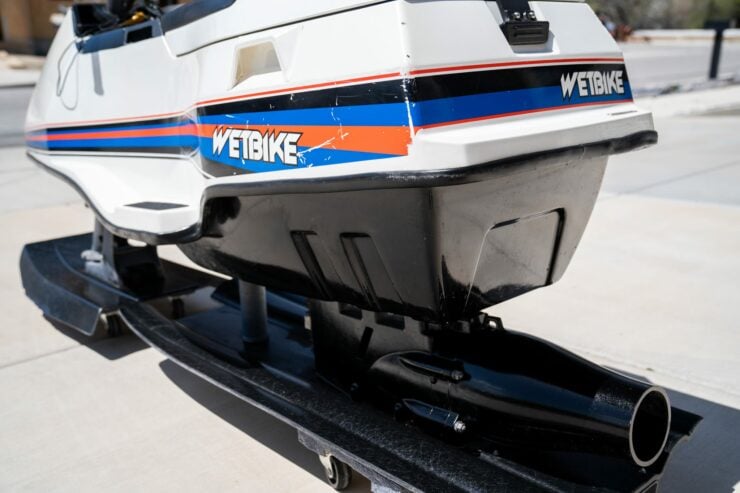
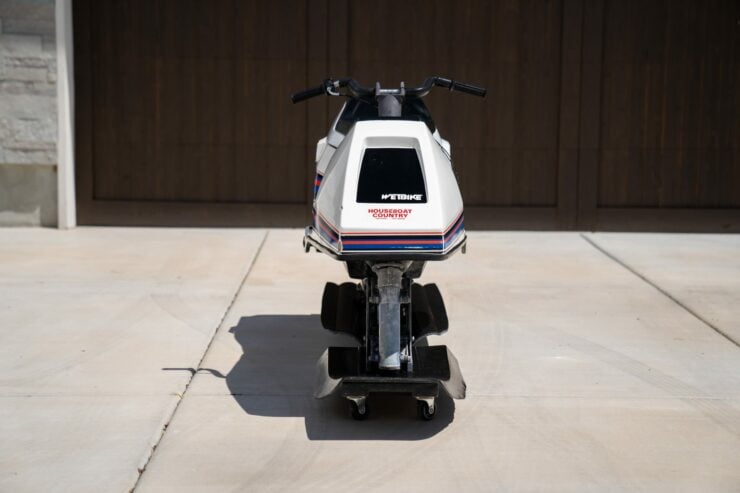
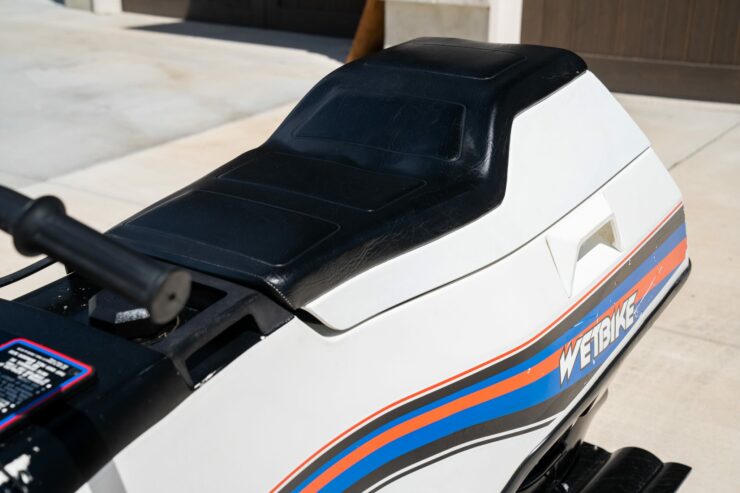
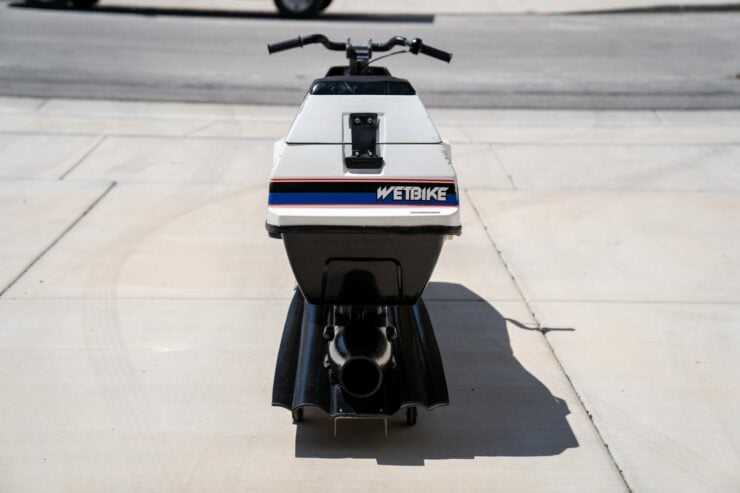
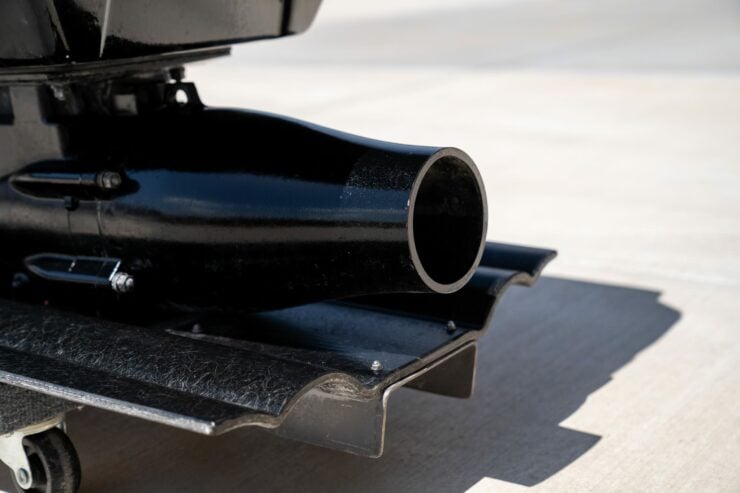
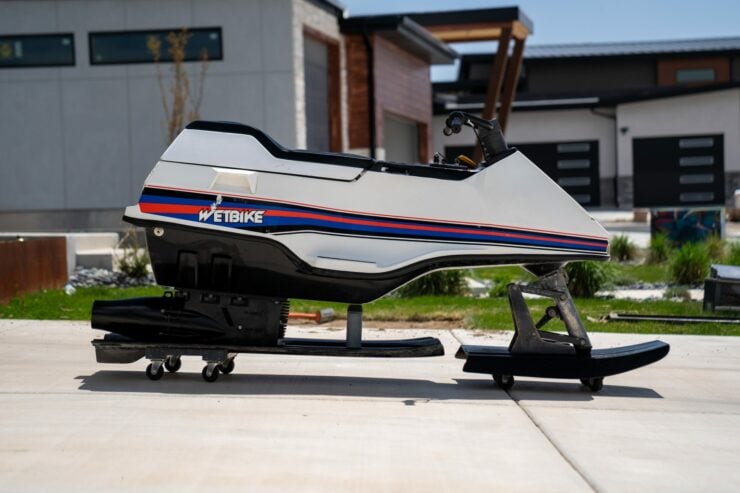
Images courtesy of Bring a Trailer

